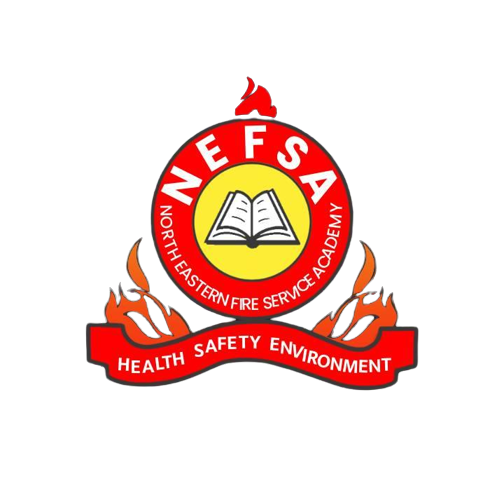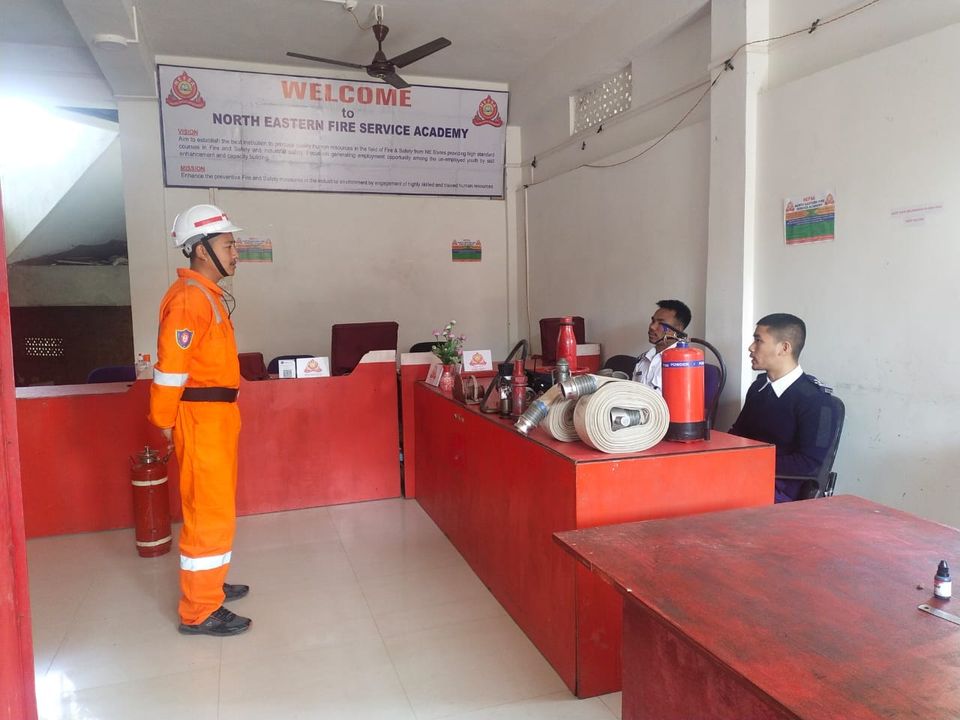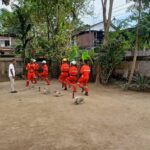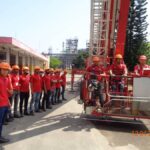The journey to becoming a firefighter is one of dedication, rigorous training, and a deep commitment to serving the community. At
NEFSA Fire Academy, we pride ourselves on providing a comprehensive training program that prepares our trainees for every aspect
of firefighting. This blog takes you through the stages of our training program, highlighting how we transition our trainees from
the classroom to the fireground, ensuring they are ready to face any challenge that comes their way.
The NEFSA Training Philosophy
At NEFSA Fire Academy, we believe in a holistic approach to firefighter training. Our program is designed to equip trainees with the knowledge, skills, and physical fitness required to excel in the field. We focus on three main pillars:
- Theoretical Knowledge: Understanding fire behavior, safety protocols, and firefighting techniques.
- Practical Skills: Hands-on training in firefighting equipment, rescue operations, and emergency response.
- Physical Fitness: Building the strength and endurance necessary for the physical demands of firefighting.
Classroom Training: Building a Strong Foundation
The journey begins in the classroom, where trainees are introduced to the fundamental concepts of firefighting. This phase covers:
Fire Science and Behavior
Trainees learn about the chemistry of fire, how it spreads, and the different classes of fires. Understanding fire behavior is
crucial for effective firefighting and safety.
Safety Protocols
Safety is paramount in firefighting. Trainees are taught the importance of personal protective equipment (PPE), proper use of
breathing apparatus, and safety protocols to follow during operations.
Firefighting Techniques
From basic hose handling to advanced firefighting strategies, trainees are introduced to various techniques used in the field. This includes understanding the incident command system (ICS) and how to coordinate with other emergency services.
Practical Training: Hands-On Experience
Once the theoretical foundation is laid, trainees move on to practical training. This phase is designed to simulate real-life
scenarios and provide hands-on experience with firefighting equipment and techniques.
Fireground Simulations
Our state-of-the-art training facility includes fireground simulators where trainees can practice fighting different types of fires.
These simulations replicate real-world conditions, helping trainees build confidence and proficiency.
Rescue Operations
Trainees learn essential rescue techniques, including search and rescue, victim extrication, and using ladders. They practice these
skills in controlled environments to ensure they are prepared for actual emergencies.
Equipment Handling
Proper use of firefighting equipment is critical for safety and efficiency. Trainees receive extensive training on handling hoses,
pumps, axes, and other tools used in firefighting and rescue operations.
Physical Fitness: Preparing for the Demands
Firefighting is physically demanding, requiring strength, endurance, and agility. Our physical fitness program is designed to
ensure trainees can meet these demands.
Strength Training
Trainees engage in strength training exercises that target the muscles used in firefighting tasks. This includes lifting heavy
equipment, breaking through barriers, and carrying victims to safety.
Cardiovascular Fitness
Cardiovascular fitness is essential for sustained physical effort. Trainees participate in running, swimming, and other aerobic
activities to build endurance.
Flexibility and Agility
Flexibility and agility are crucial for maneuvering in tight spaces and reacting quickly to changing situations. Stretching exercises
and agility drills are incorporated into the fitness program.
Real-World Application: From Training to Action
The culmination of NEFSA’s training program is the transition from training to real-world application. Our graduates are not only
equipped with knowledge and skills but also the confidence to face real-life emergencies.
Live Fire Drills
Before graduation, trainees participate in live fire drills. These exercises involve actual fires, providing an opportunity to
apply everything they have learned in a controlled but realistic environment.
Internship Programs
NEFSA collaborates with local fire departments to offer internship programs. Trainees gain valuable on-the-job experience, working alongside seasoned firefighters and participating in real emergency responses.
Continuous Learning
The learning doesn’t stop after graduation. NEFSA encourages continuous education and provides opportunities for advanced training
and specialization in areas such as hazardous materials (HazMat) response, high-rise firefighting, and wildland firefighting.
Success Stories: NEFSA Graduates in Action
Our comprehensive training program has produced many successful firefighters who have made significant contributions to their
communities. From leading high-rise fire operations to pioneering hazardous materials response, our graduates are well-prepared to
tackle any challenge.
Conclusion
At NEFSA Fire Academy, we are committed to providing the highest quality training to our trainees. Our comprehensive program ensures
that they are well-prepared to transition from the classroom to the fireground, equipped with the knowledge, skills, and physical
fitness required to excel in the field. If you are passionate about firefighting and ready to make a difference, NEFSA Fire Academy
is the place to start your journey.
For more information and to apply, visit the NEFSA Fire Academy Dibrugarh official website.
For more Blog : Click Here







